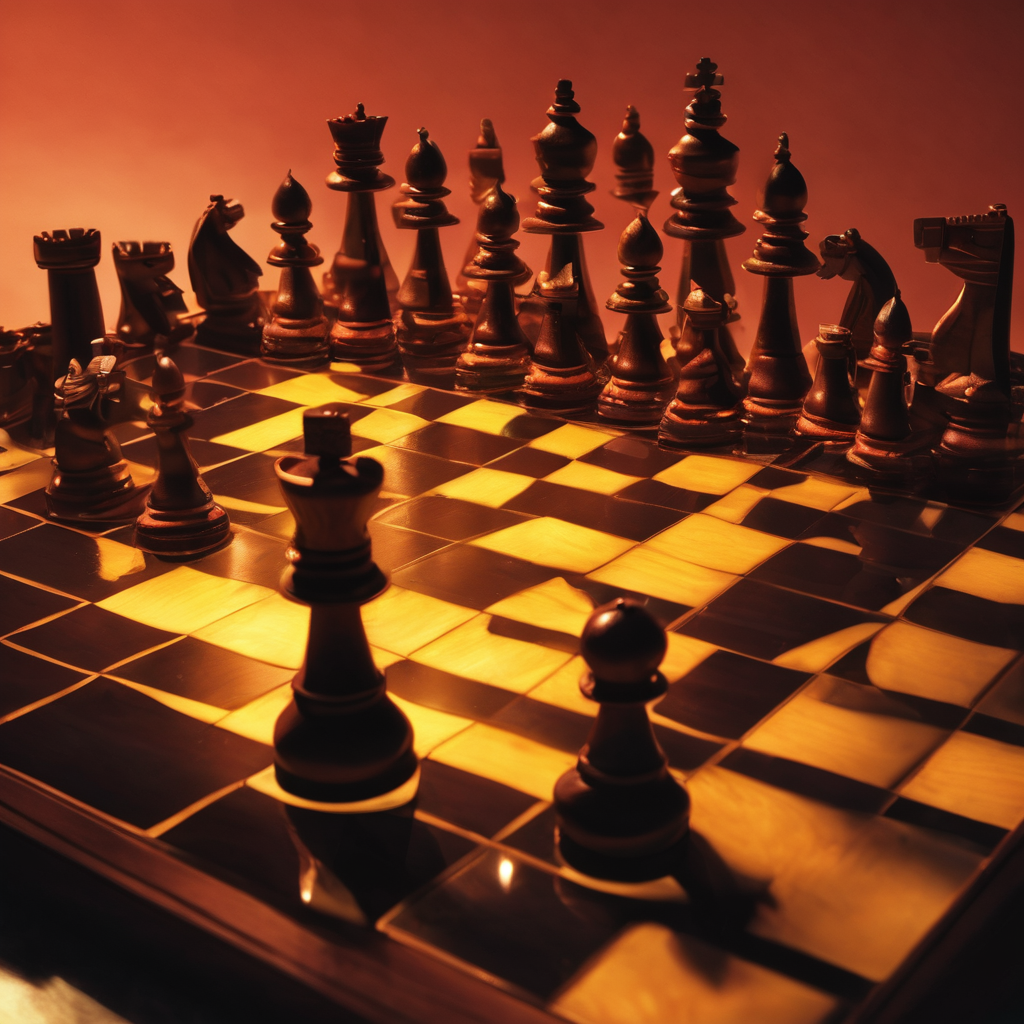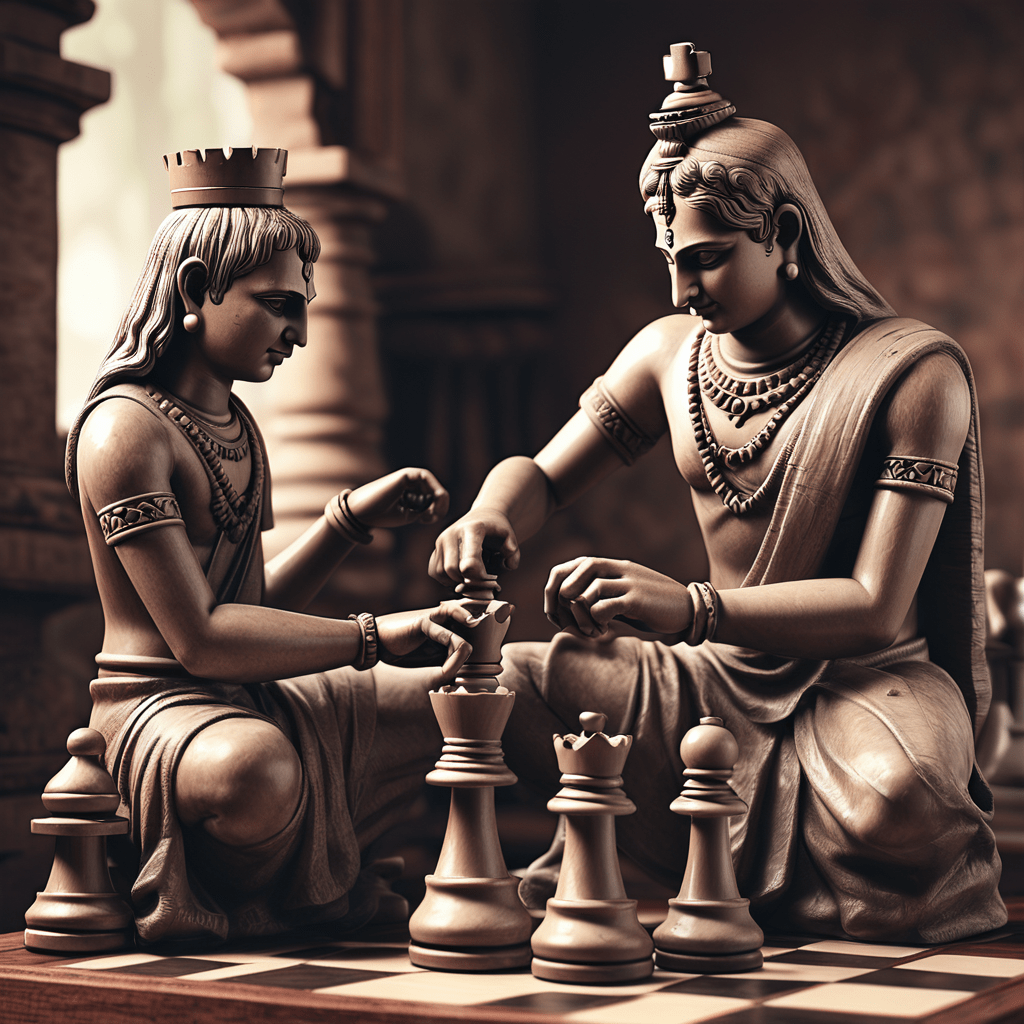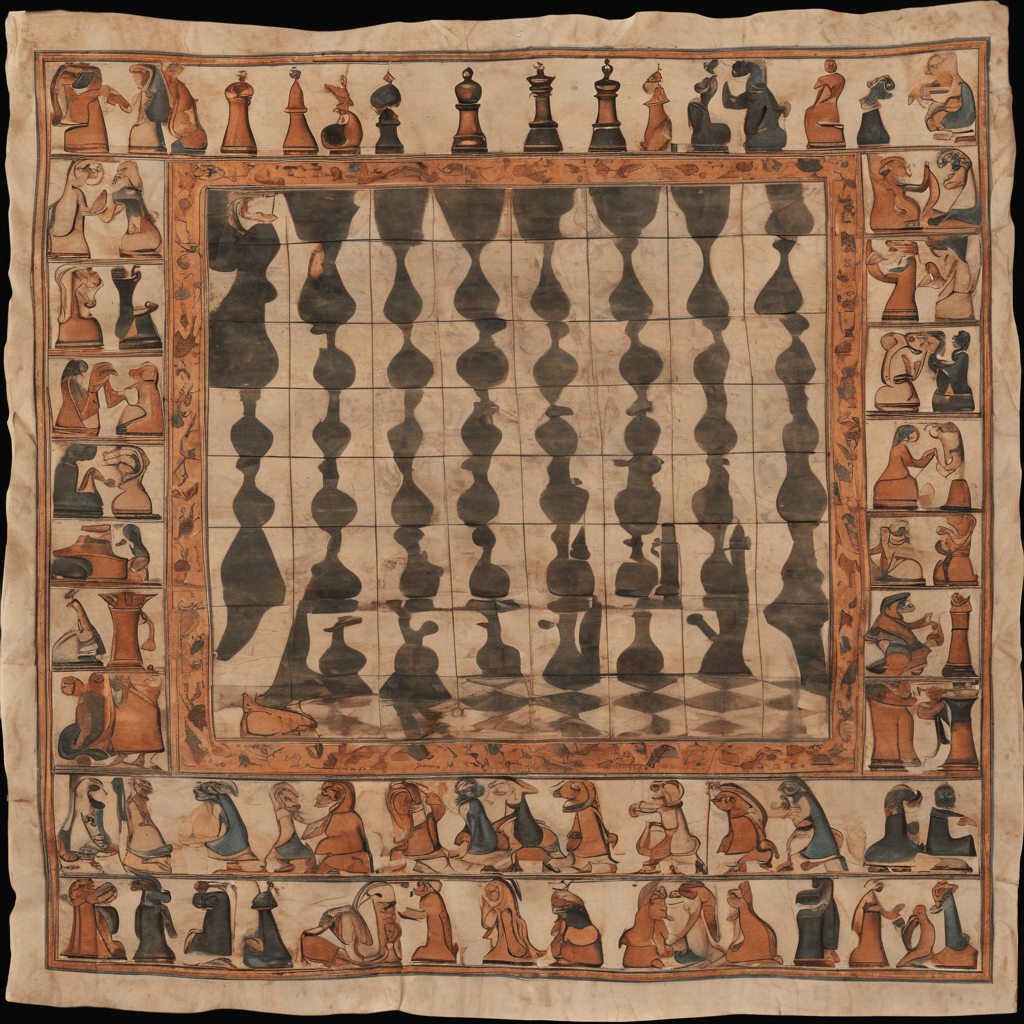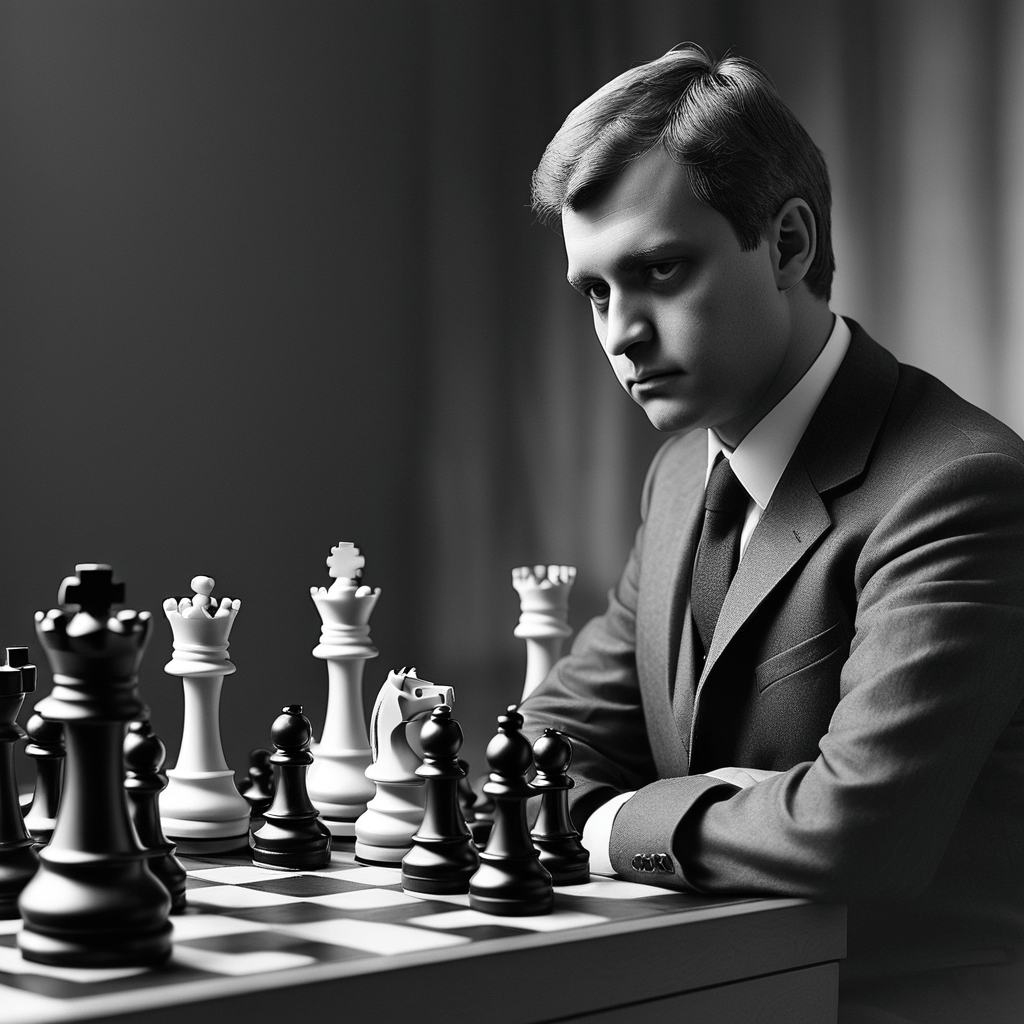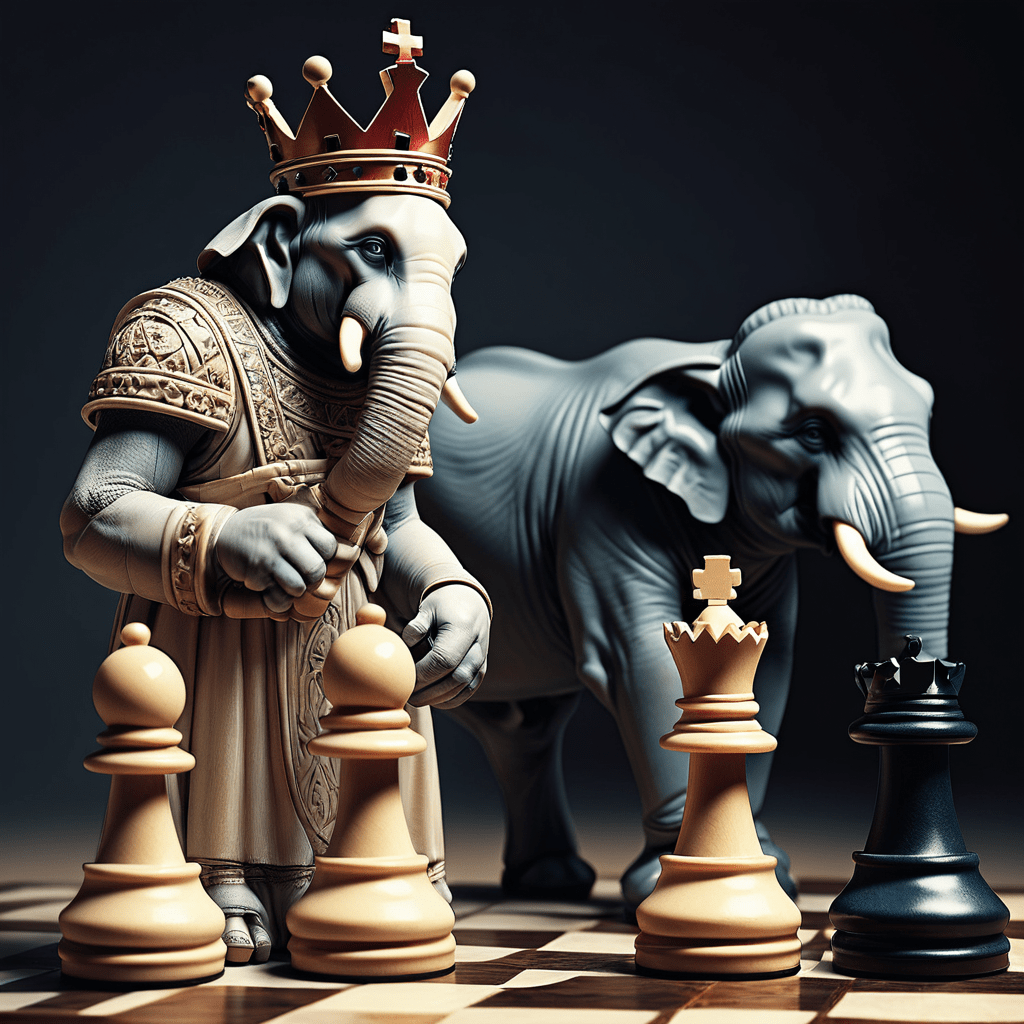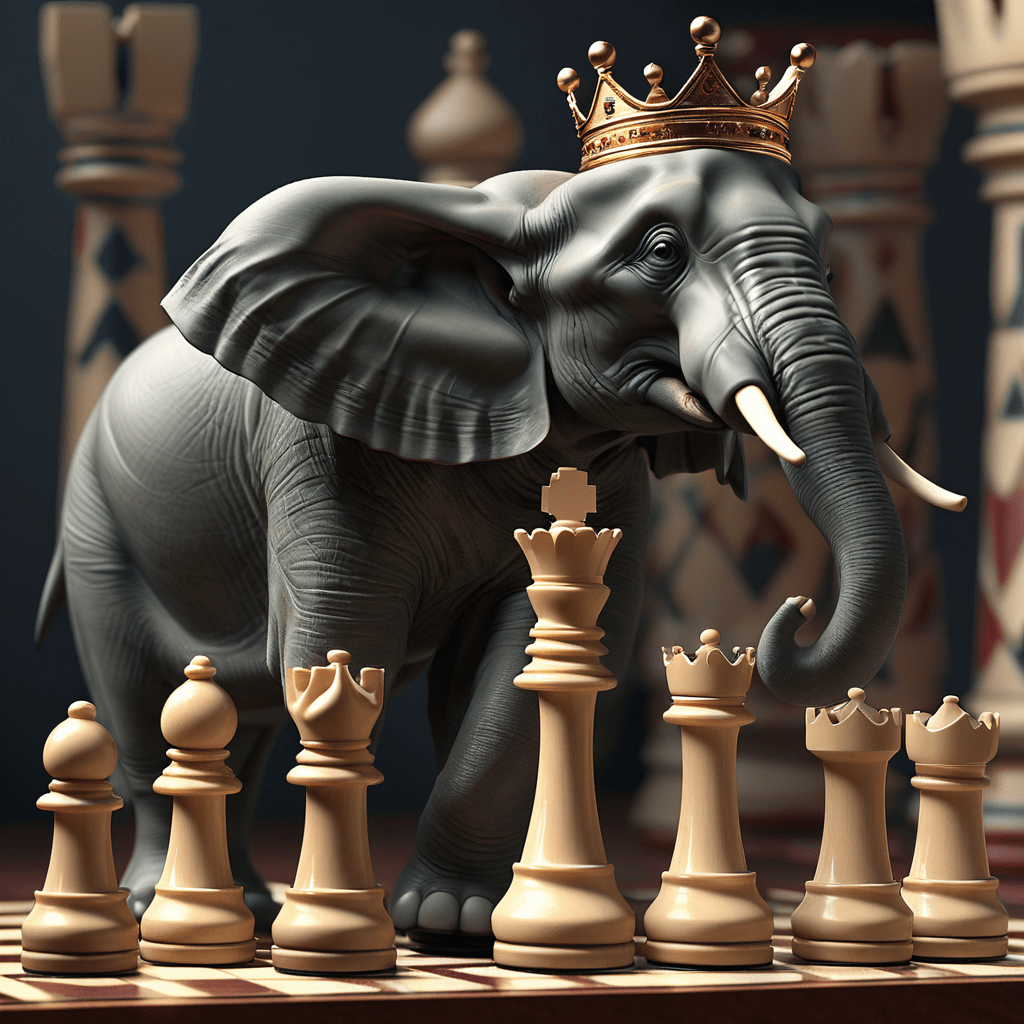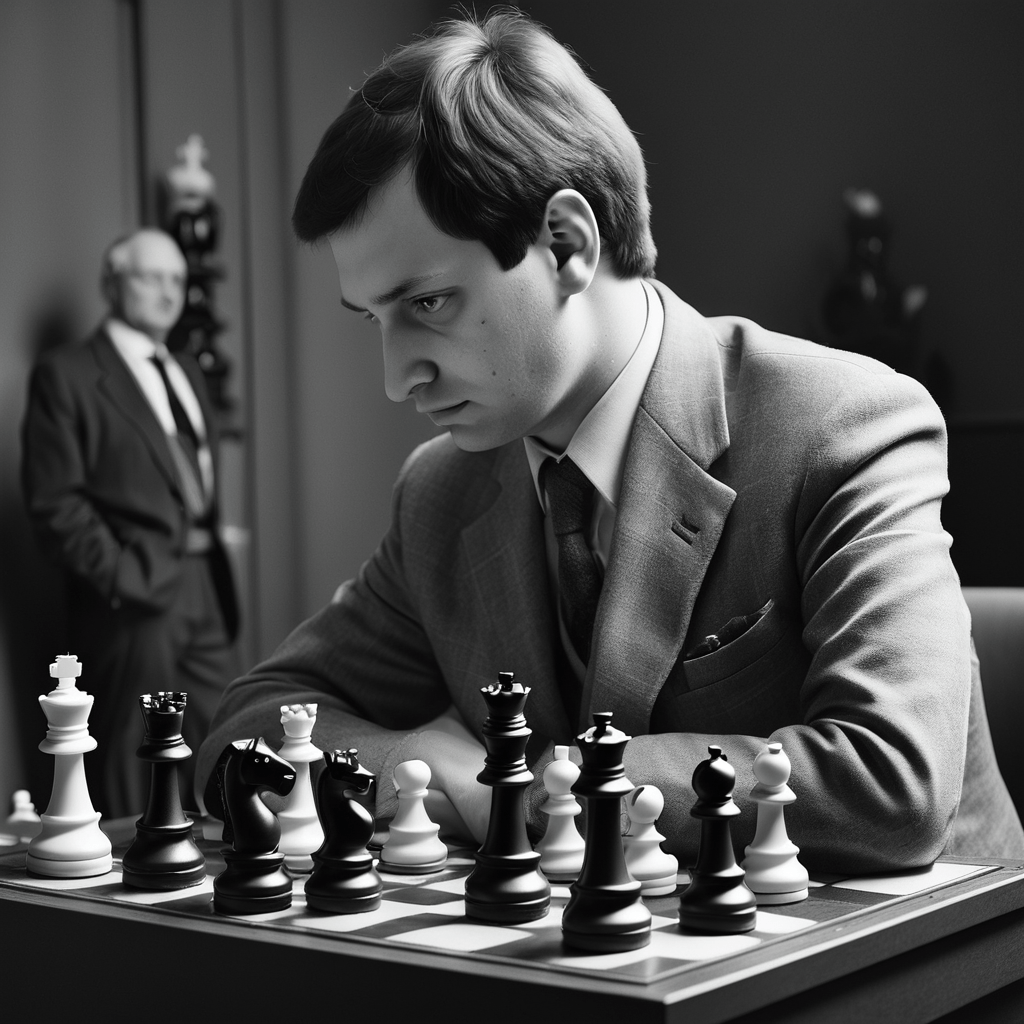For centuries, the minds of human beings have been inspired by the game of chess. From expensive glass chess pieces to cardboard squares, you can find them in all homes across the world. However, few pause to consider the incredible journey of chess across time and territories. ( Unraveling its Evolutionary Best Journey)
Chess is a game that was invented in India over 1500 years ago. It was derived from a strategy board game called Chaturanga played by kings that eventually led to the modern version of chess. Chess changed the world by transforming into a global game played around the globe. Its popularity today pays tribute to its diverse and sustainable appeal which has transcended across cultures.
Origins of Chess in India
It has been acknowledged by most scholars that chess originated in India, during the 6th century AD Gupta dynasty which dates back to about 600 It originated from the Indian war strategy game called Chaturanga.
In Sanskrit, chaturanga means ‘four divisions’, representing warfare branches:
- Infantry: Pawn pieces
- Cavalry: Knight pieces
- Elephant corps: Bishop pieces
- Chariot corps: Rook pieces
Two key developments transformed chaturanga into early chess:
- The vizier (King’s minister) became the new ‘King’ piece to avoid killing sovereigns even symbolically.
- A new piece called ‘queen’ or ‘minister’ got the combined powers of rook, bishop, and knight.
The game showed a conflict between two kingdoms that saw the movement of pieces across a 64-squared board based on rolls. Military subjects attracted Indian kings and nobility. They were both players and supporters, evangelizing Chaturanga from within India to the outside world. ( Unraveling its Evolutionary Best Journey )
Along the Silk Route, Westward Journeying
From the 7th to 1st century, Chess migrated from India to Persia through the Silk Route. Chess is believed to have been introduced in Persia by an Arab conqueror Muhammad bin Qasim during his invasion of Sindh 712CE.
Four-handed fide produces shatranj, their Persian term for chaturanga adapted to an 8×8 grid from the year eight hundred C.E. onwards. Shatranj spread through the Muslim world by 10 th century during the Arab invasion of Persia. ( Unraveling its Evolutionary Best Journey )
Evolution Under Islamic Rule
During the period of Muslim rule across the Middle East, North Africa, and Spain between the 11th 15 15th centuries tremendous evolution took place in chess. Key transitions:
- The chaturanga ‘Vizier’ became the Persian ‘Shah’ meaning ‘King’.
- The piece later evolved into the European style ‘King’ chess piece.
- The Queen piece changed from the weak ferz to the powerful firman combining queen+knight moves.
- The Bishop piece derived its current powers from the fearsome all-war elephant.
- Traders introduced chess to Europe by 1000 CE after learning it from Muslim scholars.
Therefore, by the 11th century, there were precursors to modern chess pieces. However, their actions were more gradual relative to modern movements for them to fit into social leisure play. Special messengers even transported moves directly from one remote opponent to another physically!
Standardization in Europe
In the years 1000 to 150 CE, Chess fever rapidly spread over Europe. European players added vital changes to speed up the game:
- The Queen gained immense power as the strongest piece by 1450.
- Pawn moves became faster letting them advance 2 squares initially.
- The Bishop and Queen could now move any distance in one linear direction.
- Castling debuted allowing Kings and Rooks to swap positions.
- En passant captures, pawn promotion rules, and checkmate conditions became standardized.
The chess sets that were used during the Renaissance featured elaborate European figures such as kings, queens, knights, and bishops. This did away with abstract pieces like firmans and files. Shapes became naturalistic rather than symbolic.
Within the next few years, high-society popularity led to chess being brought into the Western mainstream. Popular strategy guides quickened the learning process of amateurs. By 1800, modern competitive chess developed all over Europe. ( Unraveling its Evolutionary Best Journey )
Globalization: Chess as Soft Power
In the years from 1500 to today, chess gained a lot due to European colonialism and globalization. With the expansion of Western hegemony came Western chess.
Christian missionaries also helped popularize chess across the world by translating books and teaching locals. In many colonized countries, chess spread alongside Christianity.
Chess acquired the prestige of the high-class thanks to its noble origins. Through chess literacy one was able to ensure education and class status. It became a symbol of privilege. This “soft power” contributed to the development of chess as a globally popular sophisticated strategy game.
Standardization: Birth of FIDE (1924)
During that time the requirements arose to standardize international tournament rules due to which chess grew in popularity worldwide by the 1900s. Therefore, the World Chess Federation (Federation Internationale des Echecs or FIDE) was created in 1924 by leading chess masters.
Even today, professional chess is governed by FIDE which originated in Switzerland. It creates generalized regulatory policies on rules, rankings titles, and events. This finally established the worldwide parameters of chess.
The Chess Boom – Twentieth Century
Innovations in the 1900s catapulted chess into the mainstream:
- Mass-manufacture of affordable chess sets using plastic and cardboard
- Books and magazines catering to novice players
- Chess strategy syndicated columns and newspaper problem puzzles
- Radio and TV coverage of high-profile chess matches after 1945
- The fame of young prodigy grandmasters like Bobby Fischer
These processes made it possible for chess to break through class barriers and become a pop culture phenomenon. The Cold War positively affected the development of a chess boom, since the game can be reflected as ‘warfare by other means’ between the USA and USSR. For the very first time, professional chess players became celebrities. ( Unraveling its Evolutionary Best Journey )
The Computer Age: Artificial Intelligence in Chess
Starting from the 1990s, computers reinvented chess in unprecedented ways. Revolutionary progress in chess computing occurred thanks to:
- Powerful chess programs using AI decision trees and ‘deep learning’ algorithms
- Lightning-speed processors to analyze millions of moves per second
- Large opening books and endgame tablebases stored in databases
- Sophisticated chess engines like DeepBlue that learned human strategies and tactics over time
This enabled the computers to face and even defeat famous human masters. The man-machine matches caught the public’s attention as well and furthered artificial intelligence.
Online Chess: Internet and Apps
Digital chess playing options after 2000 are on the increase because of the internet age. Candidates include:
- Websites like Chess.com with browser gameplay, lessons, and forums
- Massive online tournaments with thousands of geographically dispersed players
- Social platforms like Twitch for spectators to watch top chess streamers
- Chess game apps for smartphones and tablets
- Online chess schools and ‘remote academies’ for coaching
- Digital versions played on virtual reality platforms
The game of chess has become more popular in the last two decades than in all 1400 years combined, largely thanks to online form. ( Unraveling its Evolutionary Best Journey )
India: Reviving Chess Heritage
In its home country, chess is now the third most popular game in terms of total players worldwide. Its chess accomplishments include:
- Iconic maestros like Viswanathan Anand and Koneru Humpy are among the world’s best
- Grandmasters as young as 12 years old – India’s chess prodigies
- Competitions like the high-profile Tata Steel Chess Tournament
- Increased events like district and state-level tournaments, especially for juniors
- Mass outreach programs introducing chess in schools across India
- Online chess portals in regional languages breaking language barriers
- Partnerships with global chess bodies and participation in Olympiads
The chess renaissance is reviving India’s dominance over the game that it had originally designed more than fifteen centuries back.
The Immortal Magic of Chess
Chess has surprisingly crossed centuries, continents, and countries. The different shifts introduced more levels of tactical complexity representing changing socio-political ideals.
Its roots in ancient Indian leisure have taken root today as a hyper-competitive global mind sport and also one amateur pastime activity. Chess is a never-ending knowledge – no one will ever learn all of chess.
However, at the end of it all, chess is still a fascinating mind game in an 8×8 grid. Its wizardry persists through its ability to effortlessly fit into any place where human beings reason, plan, and contend. The timeless art of chess has never ceased to intrigue people and minds globally.
And when you say ‘Checkmate!’ next time, do not forget to pause and applaud chess fantastic passages through history. This kingly and commoner game has no intention of stepping away from the world stage anytime soon. ( Unraveling its Evolutionary Best Journey )
Web Hosting for WordPress Website
Choosing the proper web hosting provider is one of those decisions when you create a WordPress website that will determine its success. Your hosting decision may have a significant impact on your site’s performance, security, and scalability. Within this in-depth guide, we will take you through the essential criteria that should be taken into account when choosing WordPress hosting.
